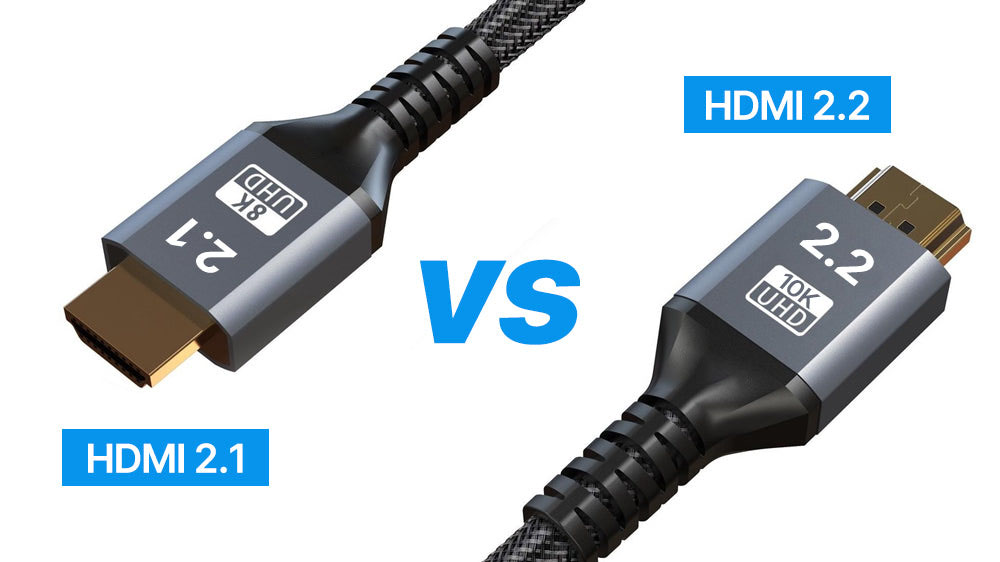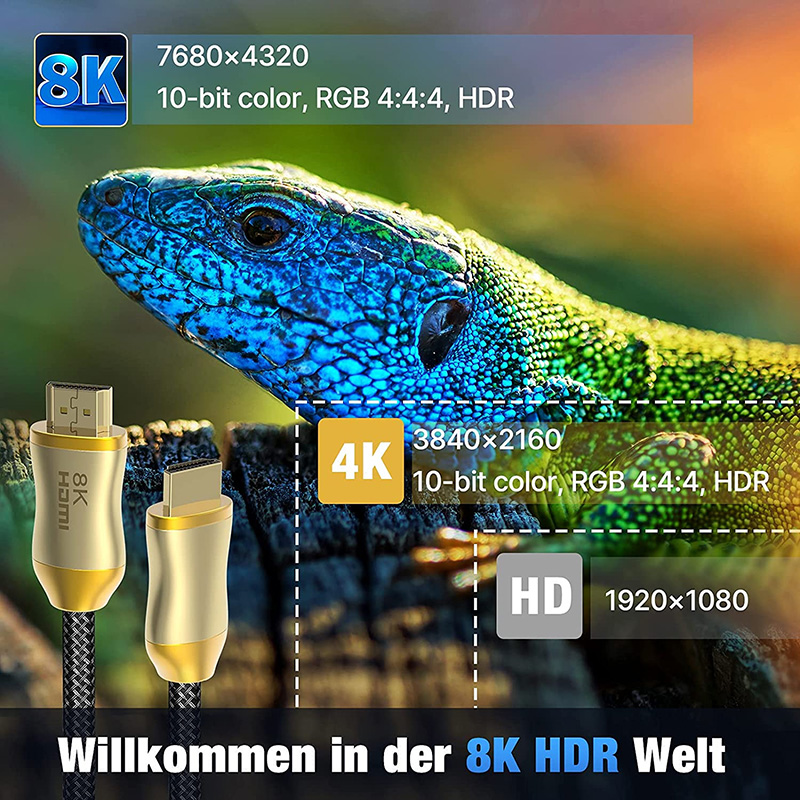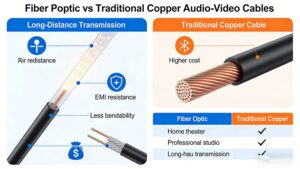В 2025 году Форум HDMI представил HDMI 2.2, удвоив пропускную способность своего предшественника, HDMI 2.1. Это обновление влечет за собой значительные последствия для геймеров и создателей контента. Давайте рассмотрим различия между этими двумя стандартами.
Разбивка полосы пропускания
HDMI 2.1 обеспечивает максимальную пропускную способность 48 Гбит/с. Это позволяет плавно передавать контент 4K на частоте 120 Гц или 8K на частоте 60 Гц, что стало переломным моментом для новейших игровых консолей и мониторов высокого класса.
С другой стороны, HDMI 2.2 делает огромный скачок, обеспечивая потрясающую пропускную способность 96 Гбит/с. Такое значительное увеличение открывает возможности для разрешения 16K при 60 Гц или 8K при 120 Гц без сжатия. В таблице ниже представлены возможности пропускной способности:
|
Версия HDMI
|
Пропускная способность
|
|
HDMI 2.1
|
48 Гбит/с
|
|
HDMI 2.2
|
96 Гбит/с
|
Поддержка разрешения и частоты обновления
|
Версия HDMI
|
Максимальное разрешение при максимальной частоте обновления
|
|
HDMI 2.1
|
8K@60 Гц, 4K@120 Гц
|
|
HDMI 2.2
|
16K@60Hz, 8K@120Hz
|
Аудио-визуальная синхронизация
В HDMI 2.2 появился протокол индикации задержки (LIP). Это изменение в игре как для геймеров, так и для создателей. При настройке нескольких устройств, например игровой консоли, подключенной к AV-ресиверу, а затем к телевизору, LIP обеспечивает идеальную синхронизацию аудио и видео. В отличие от этого, HDMI 2.1 не имеет такого специального протокола для индикации задержки, что может привести к незначительным проблемам синхронизации аудио и видео в сложных системах.
Требования к кабелю
Чтобы полностью использовать возможности HDMI 2.1, необходимы сверхскоростные кабели HDMI. Эти кабели предназначены для работы с полосой пропускания 48 Гбит/с. Для HDMI 2.2 необходимы новые кабели Ultra96, поддерживающие пропускную способность 96 Гбит/с. Несмотря на обратную совместимость кабелей HDMI 2.2, подключение кабеля HDMI 2.2 к устройству с поддержкой только HDMI 2.1 приведет к ограничению производительности до 48 Гбит/с.
Кто должен обновлять?
- Геймеры: Если у вас есть 8K-монитор или вы планируете приобрести его и хотите воспользоваться преимуществами частоты обновления 120 Гц для максимально захватывающего и отзывчивого игрового процесса, стоит обратить внимание на HDMI 2.2. Например, если игровые консоли следующего поколения, по слухам, будут поддерживать 8K@120 Гц, HDMI 2.2 будет просто необходим.
- Создатели: Те, кто работает с контентом сверхвысокого разрешения, например с 16K-видео для фильмов или крупномасштабными графическими проектами, выиграют от увеличения пропускной способности HDMI 2.2. Он позволяет осуществлять предварительный просмотр и редактирование в реальном времени без задержек.








